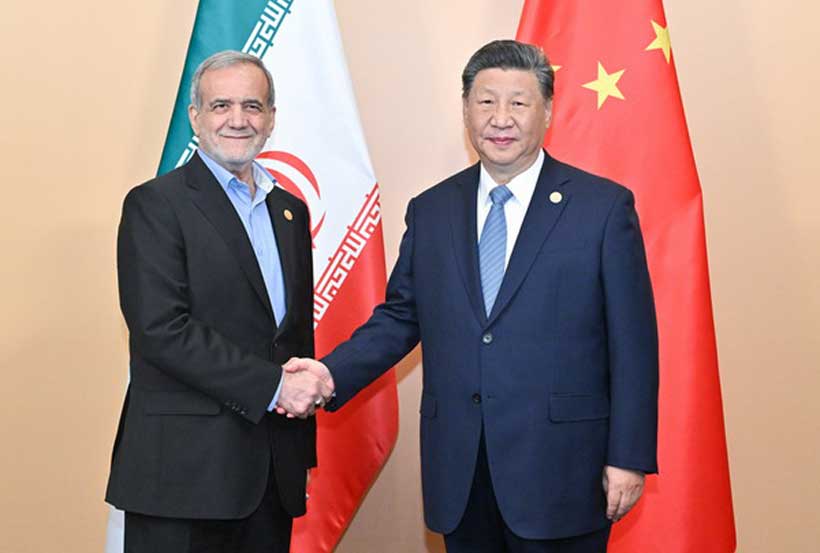After Israel’s attack on Iran’s nuclear facilities on June 13, 2025 (Operation “Sunrise of the Lions”), the U.S. once again demonstrated its willingness for another conflict in the Middle East. According to Reuters, Trump’s decision to join Israel’s military campaign against its major regional rival was “a major escalation of the conflict and the start of a new era of instability in the Middle East.” Trump later confirmed that U.S. forces had attacked Iran’s nuclear sites, calling those strikes “a great military success.” He stated that Iran’s enrichment facilities had been “completely and totally destroyed” and warned, “If peace is not achieved soon, we will target other facilities with precision and speed.” These remarks clearly illustrate Trump’s policy of “peace through war”: achieving what the West labels “peace” through threats and military action.
In the first five months of 2025, the number of U.S. airstrikes in the Middle East exceeded 529—almost equaling the total number of strikes during the entire previous four-year administration. This intensity of militarism, instead of ensuring security, has eroded space for diplomacy and increased the risk of spreading instability.
On the other side, Washington has sought to isolate Iran through strengthening regional and economic alliances. A news report noted that China expanded its influence by mediating the 2023 Iran–Saudi agreement and deepening its membership in the Shanghai Cooperation Organisation, while the U.S. pursued the Abraham Accords, the IMEC corridor, and alliances with Gulf Cooperation Council states, forming “an anti-Iran, anti-China bloc.” These Western actions have not only placed Tehran under diplomatic and economic pressure but have also pushed Iranian policymakers toward the East. Tehran sees actors like China and Russia as its only reliable partners now, since it no longer considers the West trustworthy.
The fact is that the maximum pressure sanctions policy has backfired. Leading international analysts have stated plainly that this route has gone nowhere and is driving Iran toward China. For instance, Peter Frankopan, Professor of History at Oxford, writes that Trump’s sanctions “led to Iran drawing closer to China, Russia, and even the European Union.” Meanwhile, the U.S. think tank Middle East Institute (MEI) pointed out that America’s withdrawal from the JCPOA in 2018 deeply discouraged Iranian leaders from any engagement with Washington. Moreover, European failure to uphold the nuclear deal has pushed Iran to develop strategic partnerships with China and Russia. In other words, Western punitive actions have strengthened Tehran’s resolve to resist U.S. demands and become more dependent on the East.
China has used this opportunity to deepen its relations with Tehran. The two countries have expanded their “comprehensive and strategic” partnership. Chinese leaders regard Iran’s 25-year agreement with China as evidence of Tehran’s “strategic shift from West to East,” and Iranian politicians refer to Beijing as their all-season friend. Economically, China is Iran’s largest oil customer, and Iranian oil exports are key to China’s energy security. Under this 25-year strategic deal, billions of dollars in Chinese investments are planned in Iran’s transport and energy infrastructure to boost transit links from China through the Middle East. Collectively, these ties have strengthened China’s influence in the heart of the Middle East and turned Iran into a vital corridor between Central Asia and the Gulf for Beijing.
The result of this deepening link is the emergence of dangerous dynamics. Experts warn that Iran could become a “Trojan horse” for China and Russia in the region—a phenomenon that would effectively reshape global security norms. China is leveraging recent Middle East events to expand its regional power influence: any prolonged U.S. entanglement in the Middle East creates opportunities for China to boost its influence in Iran and neighboring Gulf states while limiting Western presence there. Practically speaking, if Tehran fully tilts toward China, the West could lose control over the world’s most critical energy corridor—the Gulf and the Strait of Hormuz.
Europe also plays a role in this equation but has not revised its policy. Some analysts note that explicit or implicit European support by certain leaders for U.S. and Israeli attacks on Iran is legally questionable under international law and has marginalized Europe’s own role in any future negotiations with Iran. These analyses argue that by aligning with U.S. reactions—without substantial leverage in talks with Tehran—the EU lacks a meaningful strategy to prevent Iran’s nuclear armament while endangering its own long-term security and interests. In other words, the West’s unification against Iran and sidelining diplomacy inadvertently enabled the strengthening of its rivals.
Ultimately, the Western policy of “peace through war” has trapped the West in a quagmire of regional tensions. U.S. military and economic pressure, backed by European alignment, has pushed Iran away from the Western axis and closer to the Eastern power bloc. As analysts emphasize: if diplomacy once again fails, Iran will continue deepening ties with China and Russia; within Tehran itself, the regime will purge pro-Western factions, undermining advocates of de-escalation—a scenario that Washington will struggle to tolerate. The result of this populist strategy is that Iran effectively exits the Western sphere of influence, and geopolitically the entire Middle East comes under China’s influence—leaving the West as the ultimate loser.
